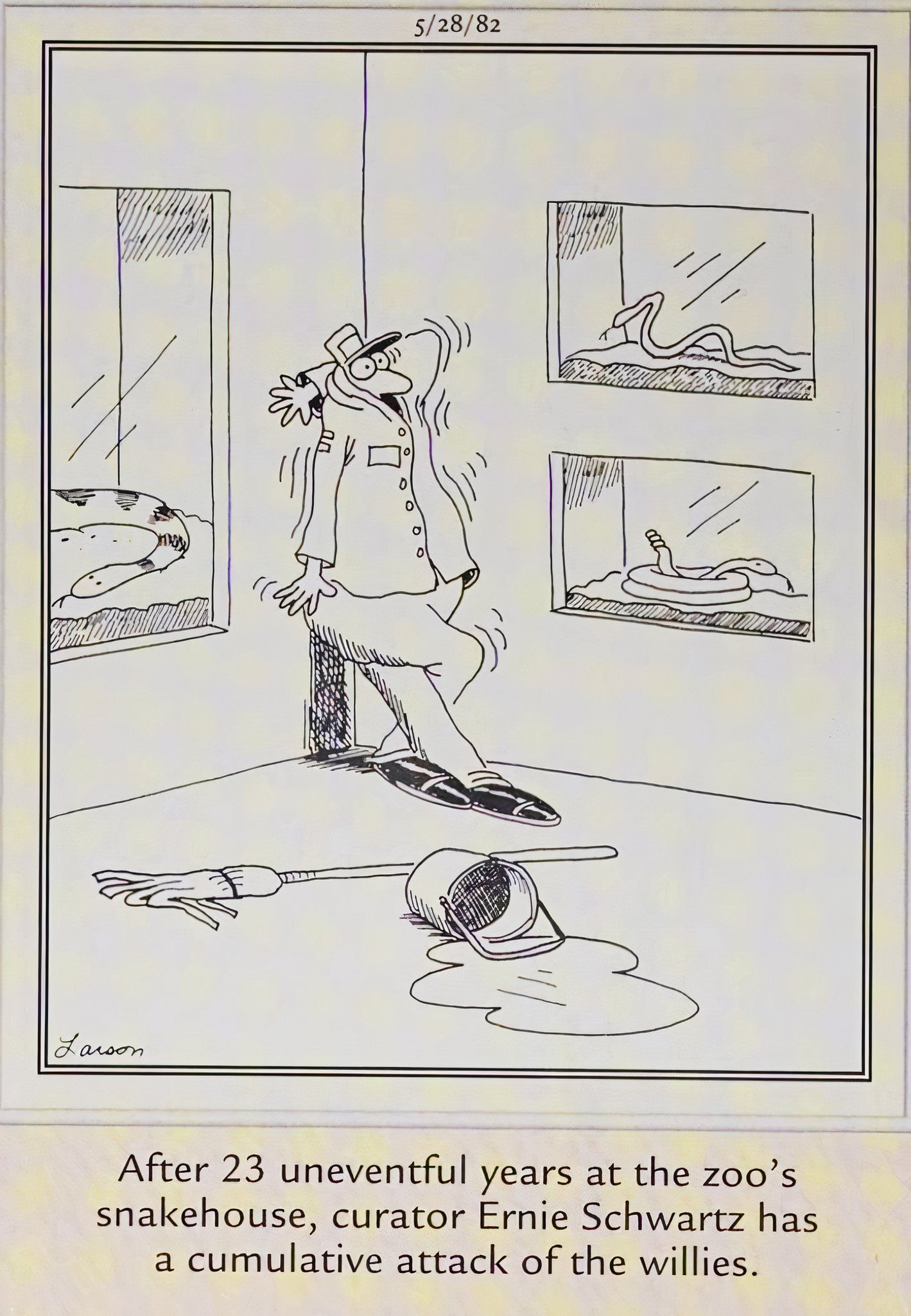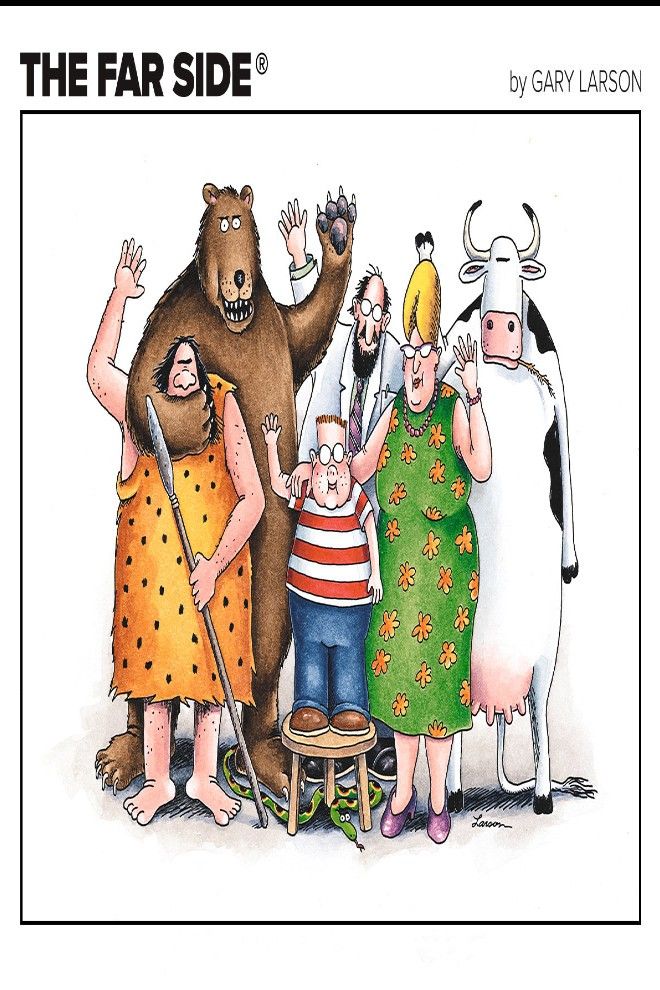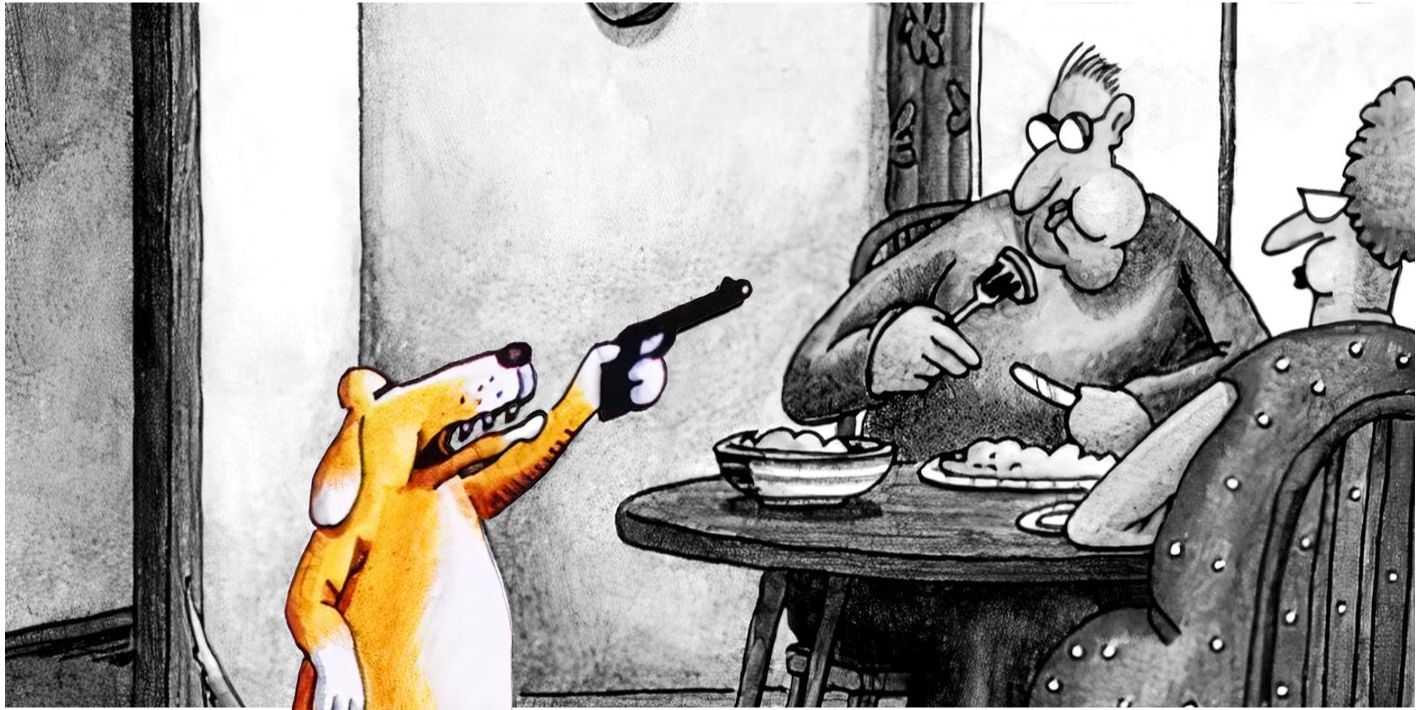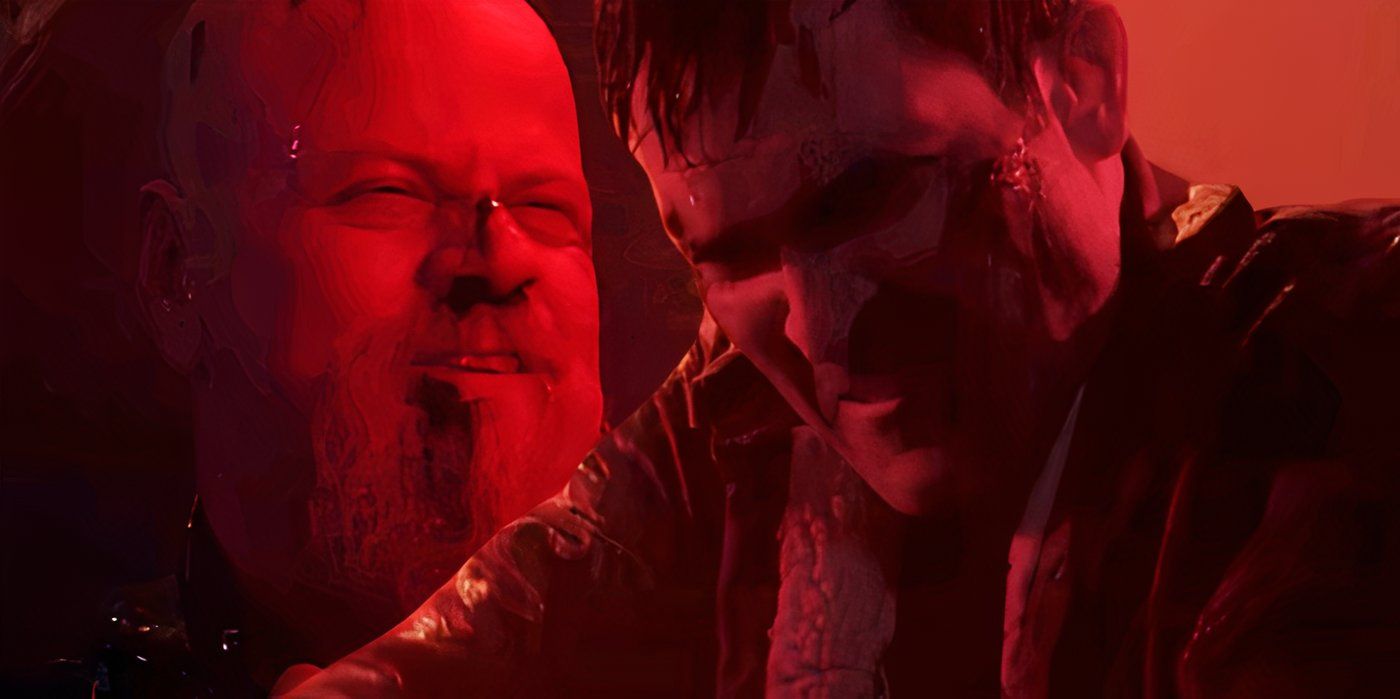Often, the end result of The Far Side cartoons left readers asking "What the?" – while, in fact, many of Gary Larson's best jokes originated with the author asking another question: "What if?" That is, The Far Side's humor was often speculative; as often as the comic reflected Larson's observations about the world around him as it was, it also frequently derived from him considering what could be.
A perfect example of this comes in the form of "Cumulative Attack of the Willies," an early Far Side cartoon in which a zookeeper suddenly finds himself terrified of snakes, after decades on the job. Readers who are familiar with Gary Larson, the author behind the cartoon, should be able to recognize an autobiographical note in this cartoon – except one that is delivered in Larson's idiosyncratic way.
The panel, while funny on its own terms, arguably also affords readers a key to unlocking the humor of other, more perplexing Far Side cartoons.
The Far Side's "Cumulative Attack of the Willies" Comic, Explained (What Makes It Funny?)
First Published: May 28, 1982

The caption for this Far Side comic – informally dubbed "Cumulative Attack of the Willies," after its punchline – an employee "at the zoo's snakehouse" is gripped by a sudden, inexplicable deluge of terror "after 23 uneventful years" on the job, accompanied an illustration depicting the man backing himself into a corner, quaking with fear, a dropped mop and spilled pail of water on the floor nearby. Safely enclosed behind glass, several snakes look on with evident disinterest, while the human character's eyes bulge with emotion, communicating the abruptness of this onset of ophidophobia.
There are a few elements that go into making this a great Far Side cartoon. The image itself is humorous, just from Gary Larson's skillful deployment of detail alone; this foundational is solidly built upon by Larson's caption, which provides clear and complete context for the image, both elaborating its premise and delivering its punchline, in just a few sentences. Considered totally in isolation from the artist – as all Far Side cartoons were initially intended to be – it is an effective joke, yet some context about Larson himself actually adds a fascinating layer to the panel.
How Gary Larson Put Himself On The Page With "Cumulative Attack" (How Autobiographical Is The Comic?)
The Far Side's "What If" Engine
Far Side fans will know that Gary Larson had an affinity for snakes just from the frequency of their appearances in the comic, but the importance of serpents to the author's career actually goes beyond that. In a way, Larson's comedic style started with childhood snake obsession; as he once explained in an interview, he had "no fear" of the slithering creatures – which, on the surface, would suggest that the punchline of "Cumulative Attack of the Willies" is not autobiographical in any way.
It seems reasonable to infer from "Cumulative Attack of the Willies" that the joke was rooted in Gary Larson asking himself what it would be like if he were to develop a fear of snakes out of nowhere.
This is true in a traditional sense, but The Far Side was, by design, a rejection of the traditional and the conventional. It seems reasonable to infer from "Cumulative Attack of the Willies" that the joke was rooted in Gary Larson asking himself what it would be like if he were to develop a fear of snakes out of nowhere. In other words, Larson seemingly considered his lack of fear, and then asked himself "what if I suddenly was hit by decades worth of fear all at once?"
In turn, Gary Larson took this "What if?" scenario and decided to illustrate it; tweaking and twisting the details until a fictional version of his question appeared on the page. Assuming this was the process behind this Far Side cartoon, it can be assumed that Larson generated other panels in the same way. In fact, upon closer examination, "What if?" seems to be the engine that propelled many classic Far Side cartoons; once readers begin to look for them in Larson's work, "What ifs?" can be found everywhere.
Applying The "What If?" Lens To The Far Side (How Much Does It Explain?)
Gary Larson's Grand Inquisition
Despite The Far Side's eclectic cast of characters, and its wide-ranging set of interests and elements, the comic was actually much more formulaic than it appeared at first glance. As it turns out, most Far Side jokes can be framed as a "What if?" question. "What if cows did X?" "What if Y grew on trees?" These bursts of speculation could be supremely silly, or deeply profound, and could manifest on the page in any number of ways, but it is clear that asking "What if?" was vital to Gary Larson's humor.

The Far Side Complete Collection
$71 $125 Save $54
Fans of the far side can't pass up this master collection of Gary Larson's finest work. Originally published in hardcover in 2003, this paperback set comes complete with a newly designed slipcase that will look great on any shelf. The Complete Far Side contains every Far Side cartoon ever published, which amounts to over 4,000, plus more than 1,100 that have never before appeared in a book and even some made after Larson retired.
The proliferation of "What if?" questions in The Far Side tells us something more about its creator and his process. One word that doesn't get used to describe Gary Larson enough, but should, is "inquisitive." His work was rooted, in many ways, in an interrogation of the world, both in asking why it was the way it was, and how it could be different. Even if that difference, from concept to execution, was wildly absurd and impossible. That is because, as any good speculative fiction author knows, examining the unreal is a vital way to confront the real.
Celebrating The Questions The Far Side Left Readers With (What More Do Fans Want To Know?)
Asking The"What Ifs?" That Didn't Need To Be Asked
Another thing to note about Gary Larson's use of "What if?" as part of his joke generation process is the way he did so frivolously, in the most positive use of the word. Part of the joy of The Far Side is the way that it answers questions nobody but Larson was likely to ask, making it a wholly idiosyncratic and deeply personal project. Of course, Larson's favorite type of answers were those that, in turn, cascaded into more questions, meaning that readers were often left in uncertainty, contemplating something they never considered before.
The Far Side is a reading experience – each comic takes readers on its own journey, while taken as a whole, Larson's opus amounts to a sprawling, richly detailed world.
This, it should be said, is precisely what should be celebrated about reading The Far Side. Far more than just a delivery vehicle for jokes, The Far Side is a reading experience – each comic takes readers on its own journey, while taken as a whole, Larson's opus amounts to a sprawling, richly detailed world. It is also a tour de force of a wildly imaginative, creatively chaotic mind. Fans of the comic will always have questions about The Far Side, and that is the true beauty of it, all these years later.

The Far Side
The Far Side is a humorous comic series developed by Gary Larson. The series has been in production since 1979 and features a wide array of comic collections, calendars, art, and other miscellaneous items.










 English (US) ·
English (US) ·